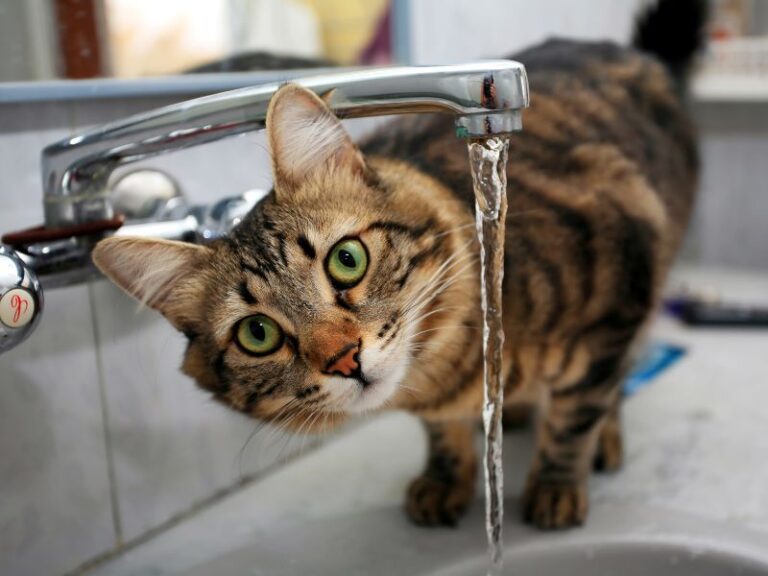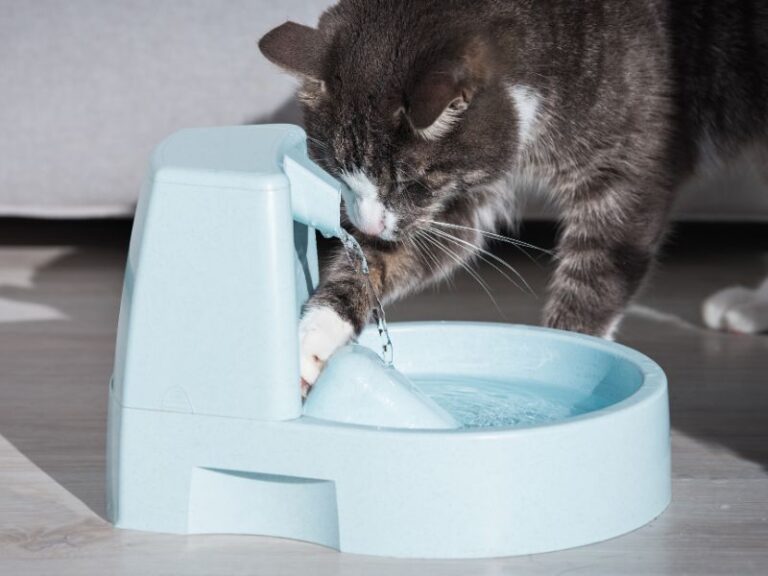Table of Contents
ToggleBringing a new kitten into your home is an exciting experience, but along with all the cuddles and playtime comes the responsibility of litter training kittens. Litter training kittens is a crucial aspect of cat ownership, not only for the convenience of both you and your feline friend but also for fostering a strong bond between you and your kitten. In this guide, we will explore the significance of how to litter train a kitten and how it can serve as a foundation for a harmonious relationship with your furry companion.
The Importance of Litter Training
Litter training plays a vital role in a kitten’s early life as it helps them develop essential habits for their well-being and your household’s cleanliness. When a kitten is taught to use a litterbox properly, it prevents them from eliminating in random spots around your home, ensuring a hygienic and odor-free environment. Not only does this make your life easier, but it also enhances the comfort and security of your pet, providing them with a designated and familiar place for their business.
Beyond the practical aspects, litter training holds emotional significance for kittens. During this training process, they learn to trust and rely on you as their caregiver, strengthening the bond between you both. Establishing a routine and providing positive reinforcement during litter training contributes to the overall emotional well-being of your furry friend, building a foundation for a loving and affectionate relationship.
Bonding with Your Kitten through Litter Training
Litter training kittens provide an excellent opportunity for bonding with your kitten right from the start. As you guide them through the process, you become their mentor and source of support, which helps to create a sense of security and trust in your presence.
Spending time together during litter training allows you to observe your kitten’s behaviors and responses, enabling you to understand their unique needs and personality traits better. It’s also a chance to engage in positive reinforcement and praise, which not only encourages proper litterbox use but also reinforces positive behavior throughout their life.
Remember, patience and understanding are key during this training phase. Like any learning experience, some kittens may catch on quickly, while others may require more time and guidance. By being patient and supportive, you demonstrate your commitment to your new feline friend’s well-being, paving the way for a strong and loving bond that will last a lifetime.
Understanding Litter Training
When to Start Litter Training
The ideal time to begin litter training is when your kitten is around 3-4 weeks old. At this age, they start to develop more control over their bodily functions, making it easier for them to learn litterbox habits. However, if you’re adopting an older kitten or a rescue cat, the training process might require a bit more patience and consistency.
Choosing the Right Kitten Litter Box
Selecting the appropriate kitten litter of kittens is crucial for successful litter training. Consider the size of the box; it should be large enough for your kitten to turn around comfortably. Hooded litter boxes might offer more privacy, which some cats prefer, but others may feel confined, so observe your kitten’s preferences.
As for the litter of kittens, opt for a non-clumping, unscented variety initially. Kittens may accidentally ingest clumping litter, causing potential health issues, and some cats may be sensitive to strong scents. Gradually transition to clumping litter as your kitten grows and becomes more accustomed to using the litter box.
Placement of the Litter Box
Choose a quiet and accessible location for the litter box. Avoid placing it near their food and water bowls, as cats generally prefer to keep their elimination area separate from their eating area. Additionally, consider having multiple litter boxes, especially if you have more than one kitten or multiple levels in your home. This ensures that your kittens can access a litterbox easily, reducing the likelihood of accidents.
Safety Considerations for Kittens
During the training process, it’s essential to create a safe environment for your kittens. Keep potentially harmful chemicals, plants, or small objects out of their reach, as curious kittens may explore and ingest items that can pose risks to their health.
Moreover, be cautious with the type of litter you use. Avoid clumping litter for kittens under three months old to prevent accidental ingestion and potential blockages.
Steps to Litter Train a Kitten
Introducing the Kitten to the Litter Box
After bringing your new kitten home, show them the location of the litter box. Place them in the litterbox gently, allowing them to explore the texture of the litter with their paws.
Observing Natural Instincts
Cats have an innate instinct to bury their waste, and kittens are no exception. Keep an eye on your kitten and observe any signs of digging or scratching in the litter box, as this indicates they are making the connection between the litter and the act of elimination.
Encouraging Positive Associations
Using Catnip or Treats: Encourage your kitten to use the litterbox by sprinkling a little catnip around the area or offering a treat as a reward when they use it correctly.
Praise and Positive Reinforcement: Whenever your kitten uses the litter box, offer praise and affectionate pets to reinforce positive behavior.
Consistency and Patience
Consistency is key during litter training. Stick to a regular feeding schedule, and immediately take your kitten to the litterbox after meals or playtime. Be patient and avoid punishing your kitten for accidents outside the litter box, as this can create fear and anxiety around the litter box.
Handling Accidents Gracefully
Accidents may happen during the training process. When your kitten has an accident, clean up the area using an enzymatic cleaner specifically designed for pet messes. This removes the scent, discouraging them from returning to the same spot.
Common Challenges
What to Do If Your Kitten Avoids the Litter Box
If your kitten shows aversion to the litter box, consider these factors:
- LitterBox Cleanliness: Ensure the litterbox is clean and scooped regularly. Cats are clean animals and may avoid a dirty litter box.
- Litter Preference: Experiment with different types of litter to find the one your kitten prefers.
- LitterBox Placement: If your kitten consistently avoids the litter box, try moving it to a different location that might be more appealing to them.
Addressing Litter Aversion Issues
Some kittens may develop litter aversion due to negative associations or prior experiences. Gradually reintroduce the litter box, using positive reinforcement, and be patient with the process.
Dealing with Spraying or Inappropriate Elimination
If your cat starts spraying or eliminating outside the litter box, consult with a veterinarian to rule out any medical issues. Spraying can be territorial, while inappropriate elimination may signal stress or anxiety.
Tips for Successful Litter Training
Providing Multiple Litter Boxes
Having multiple litter boxes, especially in multi-level homes, ensures easy access for your kittens and reduces the chances of accidents.
Regular Cleaning and Maintenance
Clean the litter boxes daily and change the litter regularly to maintain a hygienic environment for your kittens.
Gradual Transition to Unscented Litter
While some kittens are not bothered by scented litter, others may find it off-putting. Gradually transition to unscented litter if your kitten shows aversion to the scented variety.
Monitoring Changes in Behavior or Health
Keep an eye on your kitten’s litterbox habits. Any sudden changes in litterbox use or behavior could signal underlying health issues that require attention.
Cat Toilet Training: An Alternative Approach
The Concept of Toilet Training for Cats
Cat toilet training involves teaching your feline friend to use the human toilet instead of a litter box.
Pros and Cons of Toilet Training
While toilet training eliminates the need for litter boxes, it may not be suitable for all cats. Some cats may find it stressful or uncomfortable, and it requires a high level of patience and commitment from the cat owner.
Cat Toilet Training
If you decide to try toilet training, follow a gradual step-by-step process, starting with a litter-filled tray placed on top of the toilet and eventually transitioning to the toilet seat.
Litter Training Multiple Kittens
Individual Litter Boxes vs. Shared Litter Boxes
In multi-kitten households, providing individual litter boxes for each kitten is recommended. Some cats are territorial and may not feel comfortable sharing a litter box.
Minimizing LitterBox Competition and Conflicts
Observe your kittens during litter training to ensure they all have equal access to litter boxes and do not engage in conflicts over territory.
Frequently Asked Questions (FAQs)
- What age should I start litter training my kitten?
- Kittens can begin litter training at around 3-4 weeks of age.
- How often should I clean the litter box?
- Clean the litterbox at least once daily, removing waste and soiled litter.
- Can I use clumping or non-clumping litter?
- Use non-clumping litter for kittens under three months old to avoid accidental ingestion.
- How long does it usually take to litter train a kitten?
- The litter training process can take a few days to several weeks, depending on the individual kitten’s progress.
Final Words
Celebrating the successful litter training of your kitten is a rewarding milestone in your journey as a cat owner. Through understanding the importance of litter training, you have not only provided your kitten with vital habits but also strengthened your bond with them. Patience, consistency, and positive reinforcement are the keys to success during this training process.
Remember, each kitten is unique, and the litter training journey may have its ups and downs. Be attentive to your kitten’s needs and behaviors, and shower them with love and understanding as they learn and grow. With time, your diligent efforts will be rewarded with a litter-trained, happy, and confident feline companion who will bring joy and affection into your life for years. Happy litter training!






